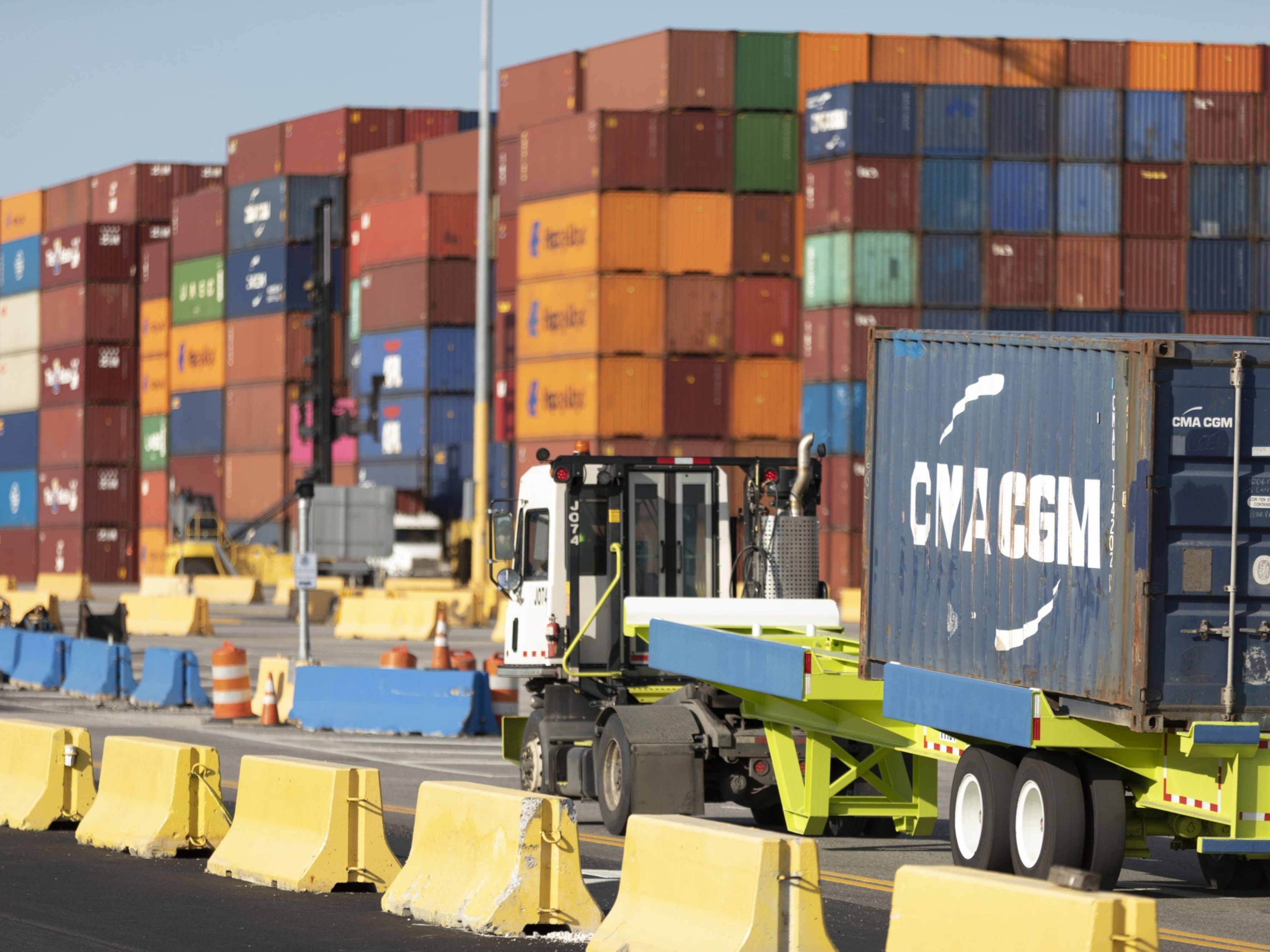
Visit Our Sponsors |
|
|
|
|
|
|
|
|
|
|
|
|
|
|
|
|
|
|
|
|
|
|
|
|
|
|
|
|
|
|
|
|
|
|
|
|
|
|

At the Port of Savannah, one of the busiest U.S. trade gateways, containers are stacked up like colorful children’s building blocks stretching as far as the eye can see.
A surge of imports driven by strong consumer demand — coupled with a shortage of truckers and a lack of warehouse space — has left 80,000 containers lingering at the 1,400-acre port on the eastern shore of Georgia in recent weeks. An average of 30 ships have been anchored off the coast, waiting for days to come ashore and unload their cargo.
On Friday, Georgia Governor Brian Kemp, surrounded by port workers in bright orange vests and state dignitaries in suits, announced the completion of a new rail system and a $8-million plan to open temporary container yards around the region. The two moves “are important to resolve the supply chain issues for Georgia and the nation,” Kemp said.
As the port’s nine new rail tracks have come on line over the past few weeks — part of what the state calls the Mason Mega Rail yard — containers have started to move at a quicker pace, according to Georgia Port Authority Executive Director Griff Lynch.
The GPA has seen a 60% reduction in the amount of time that containers sit at the terminal since the start of September. The improved cargo flow has created additional space at the terminal and reduced the number of ships waiting at anchor by 40%, Lynch said. On Friday, there were 20 ships idling at least 15 miles out in the Atlantic Ocean.
The port authority’s new rail yard, which cost $230 million and has been under construction for four years, allows the port to operate as many as six, 10,000-foot trains at one time. Each train measures nearly two miles in length at full capacity and can carry about 350 containers.
Facing a truck driver shortage, Georgia officials have been contacting large retailers and urging them to move their goods from the port by train instead of by truck. “We’re telling them, ‘wherever you can do so, start converting to rail,’” said GPA spokesman Robert Morris.
The governor also announced that the state had reached agreements to transport containers to three new temporary container yards around the state beginning as soon as Monday, creating more room at the port terminal and moving the goods closer to their final destinations.
Employees at the Savannah port have been working around-the-clock. The facility is spending 30% more than had been budgeted on wages and benefits after adding new workers and extending overtime pay, according to Joel Wooten, chairman of the port authority’s board.
The port authority said that in October it had handled more than 500,000 so-called TEUs, or twenty-foot equivalent units, a record number. “The last six months have been very challenging,” Wooten said. “We’ve all been working, shoulder-to-shoulder, day and night.”
RELATED CONTENT
RELATED VIDEOS
Timely, incisive articles delivered directly to your inbox.

